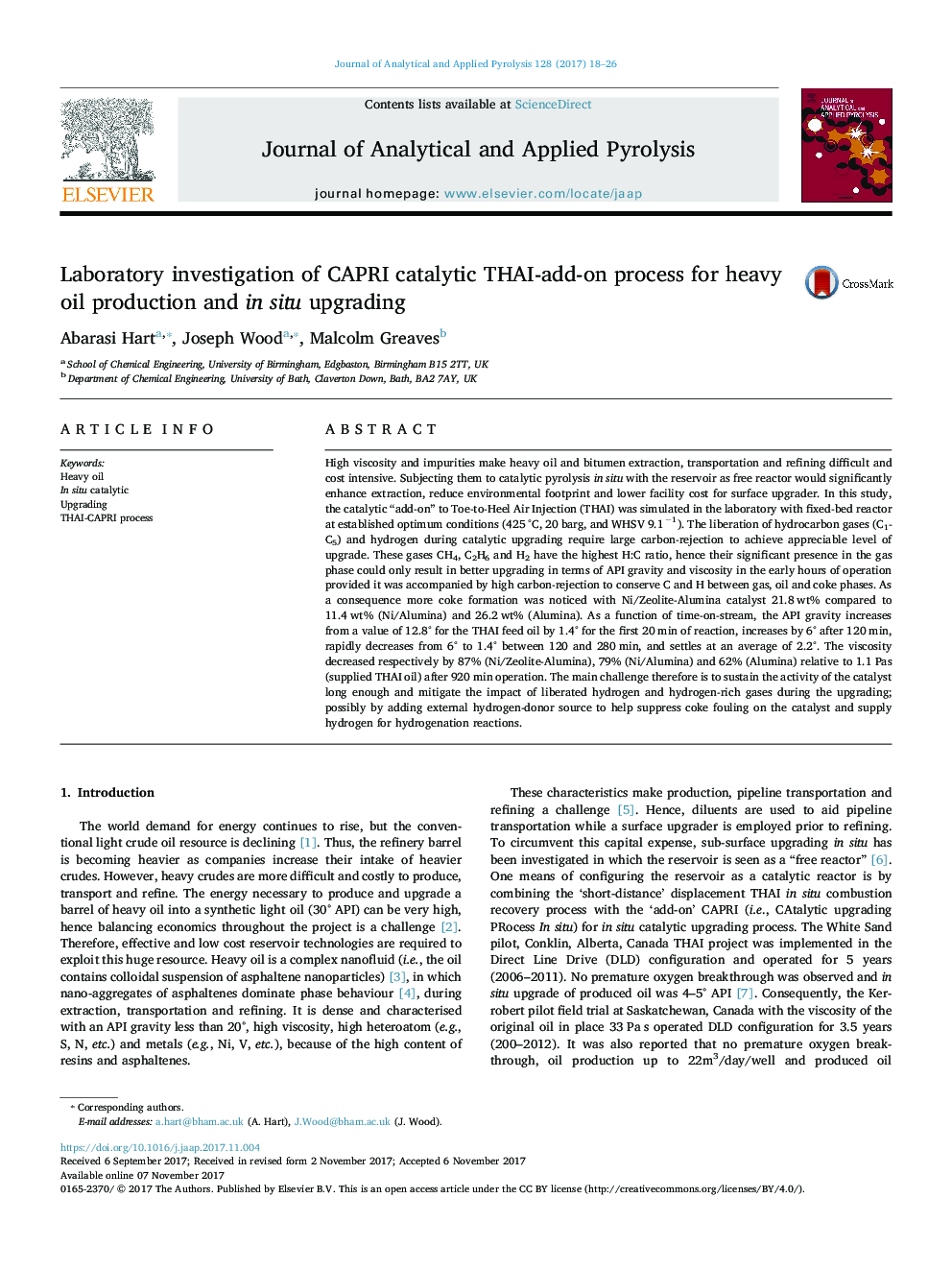| کد مقاله | کد نشریه | سال انتشار | مقاله انگلیسی | نسخه تمام متن |
|---|---|---|---|---|
| 7606403 | 1492949 | 2017 | 9 صفحه PDF | دانلود رایگان |
عنوان انگلیسی مقاله ISI
Laboratory investigation of CAPRI catalytic THAI-add-on process for heavy oil production and in situ upgrading
دانلود مقاله + سفارش ترجمه
دانلود مقاله ISI انگلیسی
رایگان برای ایرانیان
کلمات کلیدی
موضوعات مرتبط
مهندسی و علوم پایه
شیمی
شیمی آنالیزی یا شیمی تجزیه
پیش نمایش صفحه اول مقاله

چکیده انگلیسی
High viscosity and impurities make heavy oil and bitumen extraction, transportation and refining difficult and cost intensive. Subjecting them to catalytic pyrolysis in situ with the reservoir as free reactor would significantly enhance extraction, reduce environmental footprint and lower facility cost for surface upgrader. In this study, the catalytic “add-on” to Toe-to-Heel Air Injection (THAI) was simulated in the laboratory with fixed-bed reactor at established optimum conditions (425 °C, 20 barg, and WHSV 9.1â1). The liberation of hydrocarbon gases (C1-C5) and hydrogen during catalytic upgrading require large carbon-rejection to achieve appreciable level of upgrade. These gases CH4, C2H6 and H2 have the highest H:C ratio, hence their significant presence in the gas phase could only result in better upgrading in terms of API gravity and viscosity in the early hours of operation provided it was accompanied by high carbon-rejection to conserve C and H between gas, oil and coke phases. As a consequence more coke formation was noticed with Ni/Zeolite-Alumina catalyst 21.8 wt% compared to 11.4 wt% (Ni/Alumina) and 26.2 wt% (Alumina). As a function of time-on-stream, the API gravity increases from a value of 12.8° for the THAI feed oil by 1.4° for the first 20 min of reaction, increases by 6° after 120 min, rapidly decreases from 6° to 1.4° between 120 and 280 min, and settles at an average of 2.2°. The viscosity decreased respectively by 87% (Ni/Zeolite-Alumina), 79% (Ni/Alumina) and 62% (Alumina) relative to 1.1 Pas (supplied THAI oil) after 920 min operation. The main challenge therefore is to sustain the activity of the catalyst long enough and mitigate the impact of liberated hydrogen and hydrogen-rich gases during the upgrading; possibly by adding external hydrogen-donor source to help suppress coke fouling on the catalyst and supply hydrogen for hydrogenation reactions.
ناشر
Database: Elsevier - ScienceDirect (ساینس دایرکت)
Journal: Journal of Analytical and Applied Pyrolysis - Volume 128, November 2017, Pages 18-26
Journal: Journal of Analytical and Applied Pyrolysis - Volume 128, November 2017, Pages 18-26
نویسندگان
Abarasi Hart, Joseph Wood, Malcolm Greaves,